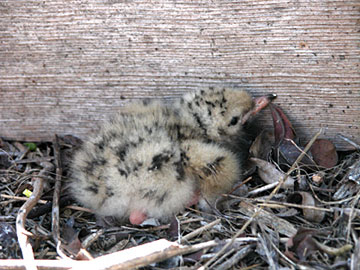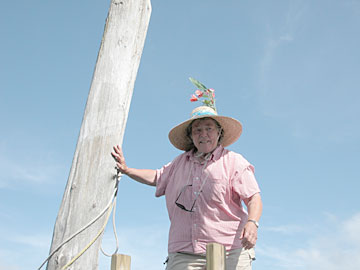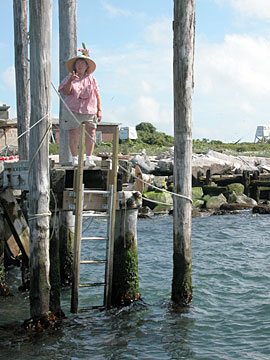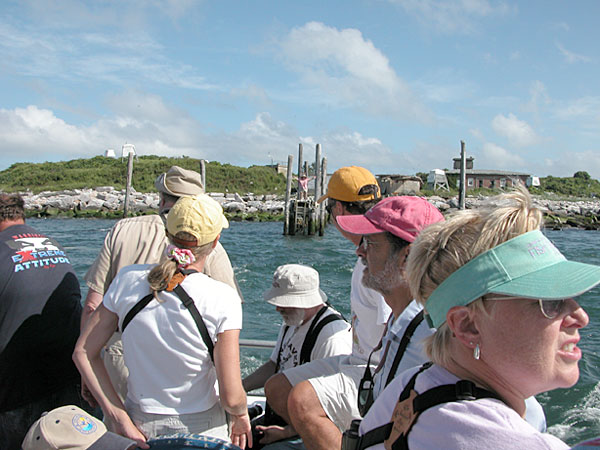Great Gull Island
By Joan Becker
Photographs by Richard L. Becker
Page 5
|

So, we’re out. Oh
joy! We pick up our dowels, jockey them into position, and head back into
the broiling sun (swim? who said “swim?”) and dive-bombing terns. We came
across a day or two-old chick still with its egg tooth, and more “chicks”
of all stages. |

Ms.
Hayes has made some significant additions to research: In 1969 she documented
the effects of PCBs on the nesting population (thin egg shells and deformed
chicks) and lobbied successfully to reduce environmental contaminants. She was
first to discover that Roseates and Commons interbreed (the down pattern on the
chicks was unusual) and that Spotted Sandpipers can be
polyandrous—one female with several male partners, each on nests. Not to mention the priceless experiences she’s offered to volunteer
staffers and college students over the years.
We
staged for departure – 40 bags of garbage and about 30 empty red water jugs were
making the trip back with us. Navigating the inadequate, too-short ladder and
the rocking boat proved to be almost too much of a challenge for some of us.
Luckily the “Biscuit,” a deck hand, was strong enough and big enough to
provide whatever extra assistance was needed. The constant calling of the terns
and Helen’s exuberant two-armed wave bade us a happy farewell as we departed
into the cooling, peaceful breezes of Long Island Sound.



Salt
air, intense heat, the terns’ cries, and our excitement during the visit all
lent themselves to an exhilarating, but exhausting day.
Go to the SongStar home page
Drop us a note
Copyright © 2004 by Joan and Richard
L. Becker




